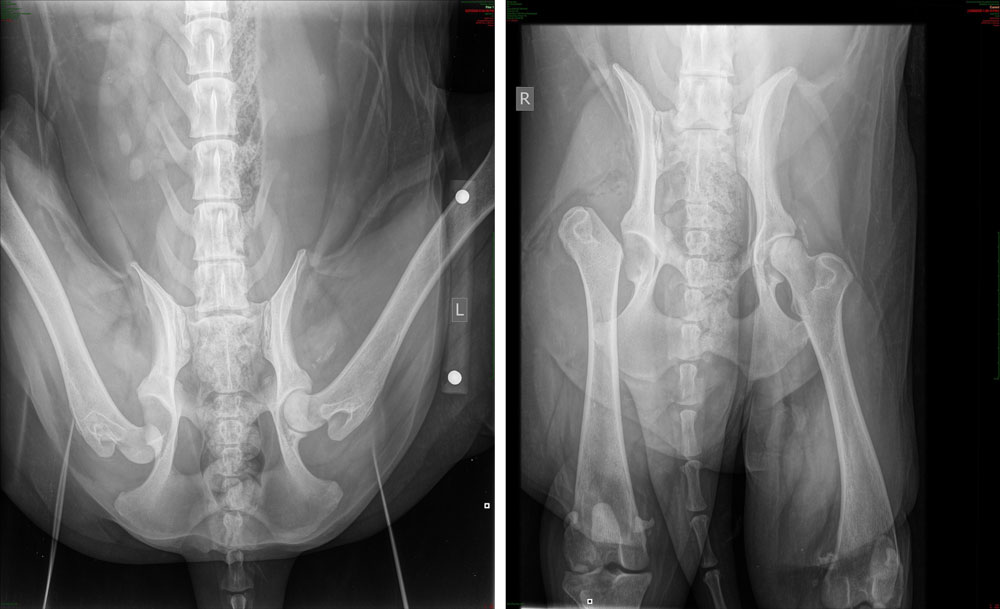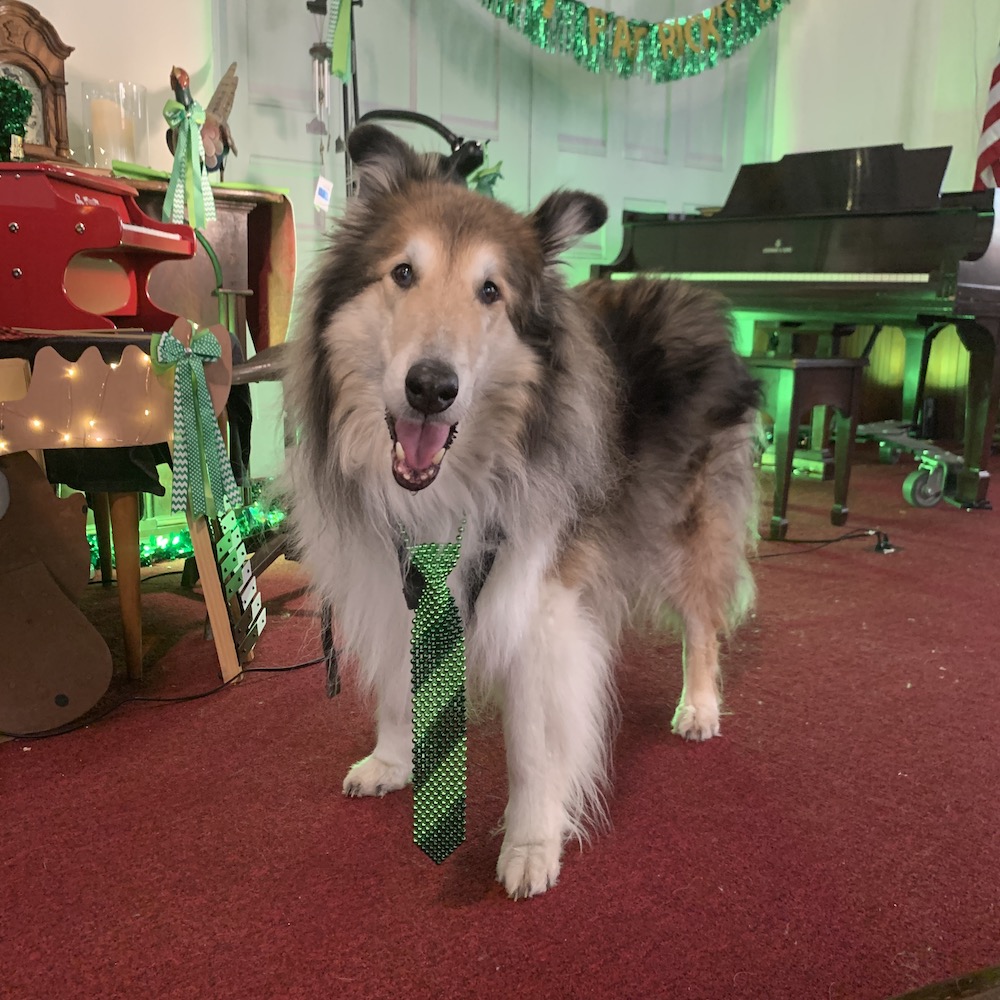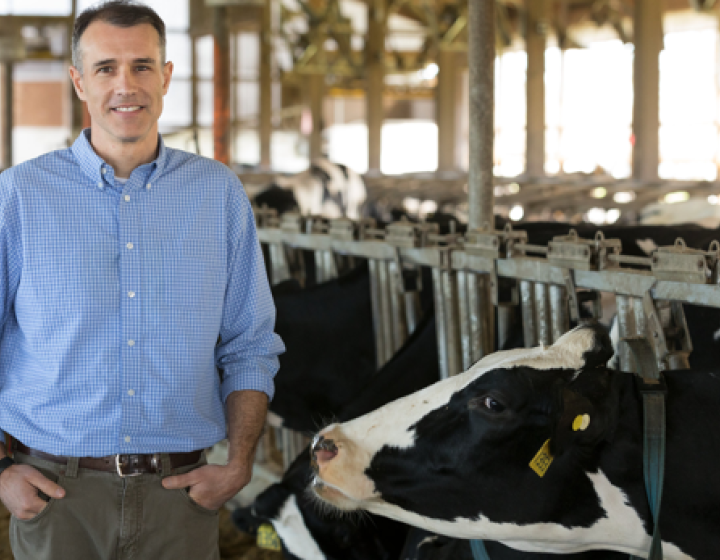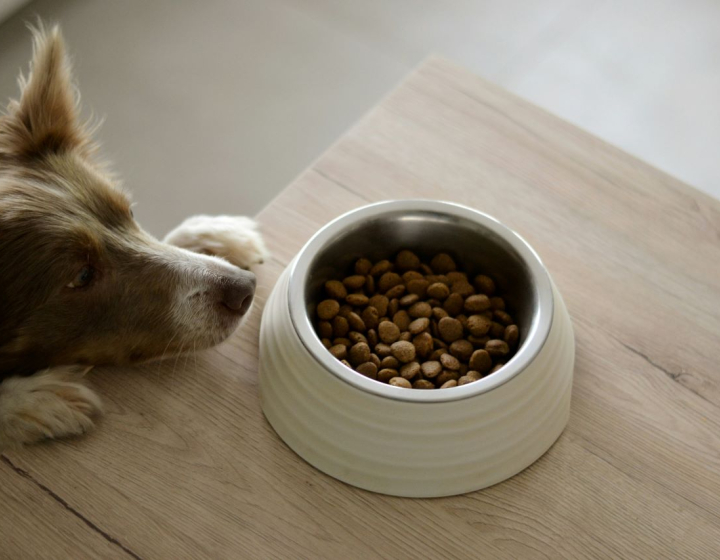Persistent rehab therapy helps aging collie recover from dislocated hip
Still spry at 10 years old, Max the rough collie leads an active life with owner Mark Brown. In May of last year, however, Max’s exuberance led him to the emergency room at the Cornell University Hospital for Animals (CUHA). Thanks to veterinarians at Cornell and the careful dedication of his owner, Max became a shining example of what rehabilitation therapy can do for an injured pet of his age.
Max’s misadventure began when he ran toward a truck while on a lead in the yard. He jumped up but misjudged the length of the lead, which pulled him down hard on his right rear leg.
“It was obvious he was hurt right away,” said Brown. “He’d never cried like that before.”
Max was rushed to CUHA, whose veterinarians gave him pain medicine and diagnosed Max with a traumatic hip luxation, an extreme and damaging dislocation of his hip joint. Cornell veterinarians advised a femoral head ostectomy (FHO), a surgical procedure which removes the ball of the hip bone. The leg muscles would then hold the femur in place until scar tissue can form a cushion. Brown and Max’s primary veterinarian agreed this was the best course of action.
“It sounds kind of scary, you know, taking the ball from a dog’s leg,” said Brown, “but I talked to my vet and she agreed it was absolutely the way to help Max walk again.”
The FHO went well and Max’s care team described him as a sweet and model patient. With the immediate situation taken care of, all attention now turned to helping Max walk again.
“A few of the hallmarks following an FHO are atrophy of the muscles in the surgical limb, since the animal isn’t using it as much initially, and decreased hip extension,” said Allison Miller ’03, D.V.M. ’07, lecturer in the Section of Sports Medicine and Rehabilitation (SMR). “Rehab is aimed at strengthening the muscles that help provide stability to the pseudo hip joint, and helping to preserve and possibly improve the patient’s range of motion of the hip.”

Max tackles rehab
Max entered his rehabilitation therapy with Miller and the SMR team, with goals of managing his pain, encouraging low-impact weight-bearing activity and building hind limb muscle strength — all while keeping the collie at an appropriate weight.
“We started out going twice a week in June,” said Brown. “Once I witnessed the benefits of the first round of therapy and the care and attention given to Max’s welfare, I was very eager to continue.”
As an older pet, Max had a few other underlying non-surgical conditions that the SMR team was able to target with much of the same focused rehab used to help him recover from surgery. His recovery did hit an obstacle when he had an alarming reaction to medication, but this was quickly resolved. Despite this setback, Max responded well to his rehabilitation therapy, which consisted of in-home exercises that strengthened his hind limb muscles — especially those that support his hip — increased his endurance and improved his spatial awareness.
The SMR team combined these exercises with twice-weekly underwater treadmill therapy. “By placing the height of the water at Max’s hip level, we are able to decrease the stress on his joints,” said Miller.
The movement of the treadmill belt and the warmth of the water helps make the soft tissues more pliable to stretch during the session and helps with hip extension.
“We chose the treadmill to help improve his general strength,” added Miller, “as anyone can likely appreciate that walking through water is more of a workout than walking on dry land!”
Max’s dry land exercises were also customized to help repair and challenge his muscles, and varied from lifting alternate legs to encouraging him to walk backwards.
Brown continued throughout the winter to bring Max to Cornell for therapy, and also built ramps for him at home to help him get around. “What’s really great about the SMR team isn’t just their kindness and attention — they were able to lead me through exercises I could do with Max at home,” said Brown.
“We are so fortunate to work with pet owners who have this dedication,” said Miller. “From the beginning, Max’s dad always wanted to improve Max’s quality of life and functional mobility.”
Musical Max
Brown, who is a musician and organist at the Hector Presbyterian Church, started doing a musical program for their congregation last spring. Twice a week, he and Max do two back-to-back sessions, one for the church and one for the Lodi Historical Society. “When the pandemic started and we stopped having service, people were miserable,” said Brown. “So we called it ‘Midday Music with Mark and Max,’ and I’d play the organ and the piano.” People tuned in to watch the pair over Facebook Live and became invested in Max’s recovery. While Max had to take a break due to his injury and then the weather, he has been able to rejoin the broadcast to the delight of the audience.
“It is interesting to watch Max’s reaction to the music,” said Brown. “Sometimes he sits up and takes notice and other times he sleeps through it. Guests ask to take him for walks and his reaction to the music often spurs comments.”
Just like humans recovering from surgery, an animal’s recovery can be optimized from rehab therapy both pre- and post-operatively, noted Miller. “Max is a great example of an older dog who has improved both his strength and endurance from the therapy he’s received both in the hospital and at home with Mark,” she said.
Max was mischievous growing up, Brown said: “I didn’t know what I was getting into with a puppy!” While he’s calmed down since his puppy days, Max is still playful and has returned to his happy self — at a recheck appointment, Brown noted that Max was feeling so good he was trying to chase the cat again.
“He’s made great strides throughout, but he’s particularly stronger over the last 10 weeks,” said Brown. “He’s become much stronger and increasingly more independently mobile at home. When he falters, he’s able to correct himself. That’s part of the objective, to enable him to have sufficient ambulatory ability to get around at home on his own.”
Brown summed up the whole experience, “I can’t say enough wonderful things about the whole Cornell sports medicine team.”
Miller noted that the feeling is mutual. “Meeting and working with owners to improve their pet’s quality of life is one of the most rewarding things about working with this service.”

Written by Melanie Greaver Cordova




